- Home
- Blog
- Write for Us
- Travel Shop
- Type of TripsSolo Female TravelGirls Trip DestinationsAdventureBudget TravelLuxury TravelSolo Female TravelGirls Trip DestinationsAdventureBudget TravelLuxury Travel
- Resources
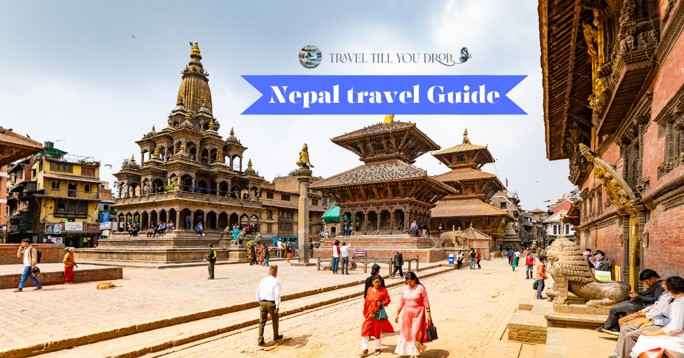
Have you ever dreamt of walking through the clouds? Standing at the foothills of the world’s highest peaks or having a yak as your hiking buddy? Welcome to Nepal. Where the mountains are tall, the tea is warm, the people are sweet, and the Wi-Fi is… let’s say, intermittent. So, Let’s explore our Nepal travel guide.
Nepal is more than just a country to tick off your bucket list. It’s an experience, a challenge, and, occasionally, a test of your patience. From the bustling streets of Kathmandu, you are filled with the sounds of haggling vendors and the occasional holy cow traffic jam. From the serene, snow-capped peaks of the Himalayas, where time seems to stand still, Nepal offers a unique blend of chaos and tranquility.
In this Nepal Travel Guide, we’re spilling the tea (and trust us, it’s not just any tea – it’s Nepali chai, so it is yummmm) on everything you need to know to tackle the Himalayas like a boss, from dodging monkeys in Kathmandu to perfecting your “Namaste” in the mountains. Get ready to have the adventure of a lifetime. So, grab your sense of humor and a sturdy pair of boots – Nepal’s calling, and it’s about to get wild!
Table of Contents
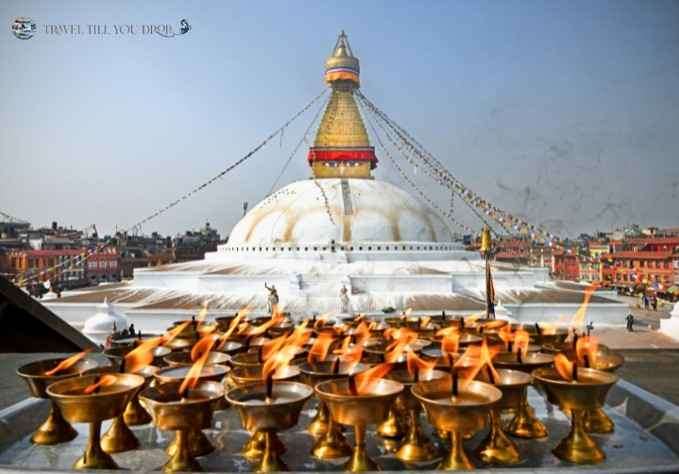
So, you have decided to visit the land of the Mountains, but to do that, you’ll need a visa. Getting a visa is like getting a golden ticket to the chocolate factory, except there is no Willy Wonka. Instead, of Charlie, you’ll have to deal with embassy workers with a knack for paperwork and poker faces.
First, ensure that your passport has at least six months of life left. Then, you’ll head off to the Nepalese embassy and fill out the required forms, which is always a good time as any traveler knows. Once all filled in, take it to the government official for their viewing pleasure to determine if you’re cool enough to head to the mountains.
Once you’ve received the stamp, you’re one step closer to the Himalayan bliss. Patience is essential, and make sure you pray to the travel gods before heading in. After all, navigating Nepalese bureaucracy can be an adventure!
Now, let’s talk about getting your booty in the air and heading toward the land of breathtaking mountains and your wildest dreams. Luckily, Nepal is far from the middle of nowhere (despite what your geography teacher may have led you to believe), so you’ve got options galore for flights.
Pro-tip: Keep your eyes peeled for those budget airlines – they may not offer champagne and caviar, but they’ll get you to Nepal without forcing you to take out a second mortgage on your house. Also, if you want to get cheap flights, read – How to Find Cheap Flights to Anywhere.
Once you’ve landed in Kathmandu (or wherever your adventure begins), it’s time to figure out how to navigate this maze of narrow streets, bustling bazaars, and rogue cows (yes, you read that right – cows tend to roam freely here).
Price Tag: Now, let’s talk cold, hard cash – because, let’s face it, nothing in life is free (except maybe those little shampoo bottles in hotel rooms, but that’s beside the point). The average price for a round-trip ticket to Nepal from Miami or LA can range from $500 to $2000 USD, depending on where you’re flying from and when you book.
Let’s cut to the chase: if you want to experience Nepal at its absolute best, mark your calendars for October and November. Clear skies, crisp weather, and fewer crowds make these months prime time for exploring the Himalayas. It’s like hitting the jackpot with more prayer flags and fewer slot machines. – October and November are the golden tickets to adventure!
Also read our blog: Best Time to Travel to Nepal: Seasonal Secrets for Adventure
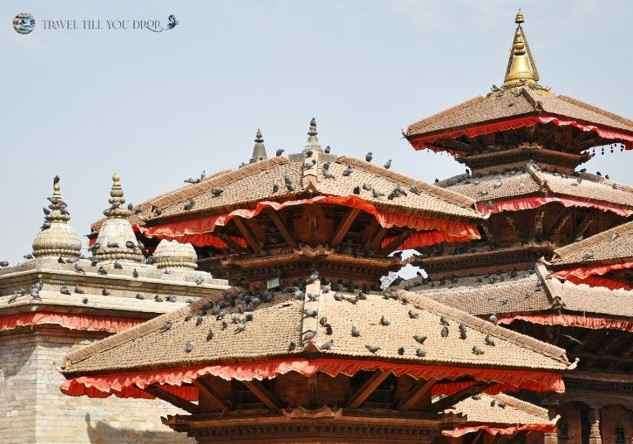
Ahh! The beating heart of Nepal – Kathmandu. This bustling municipality is a kaleidoscope of colors, cultures, and centuries-old secrets waiting to be discovered. From ancient temples to bustling markets, there’s never a dull moment in the City of Temples.
Also check out blog: Kathmandu Elevation: Why You Should Get High on Nepal’s Capital
Kathmandu isn’t just about temples and stupas – it’s also a paradise for foodies eager to tantalize their taste buds with the flavors of Nepal. Mouthwatering momos (dumpling-like food) and sizzling street food, the local cuisine is a delicious reflection of the city’s rich cultural tapestry. Don’t leave without sampling a steaming plate of dal bhat – Nepal’s national dish – washed down with a refreshing glass of chai (tea for all non-Nepali speakers).
When it comes time to rest your weary head after a day of exploring, fear not – Kathmandu has accommodation options to suit every budget and taste. Whether you’re a backpacker on a shoestring budget or a luxury traveler seeking a bit of pampering, you’ll find everything from cozy guesthouses to swanky hotels scattered throughout the city.
So, there you have it, folks – a taste of what awaits you in Kathmandu.

Next on the list of places you must see in Nepal is Pokhara. Do you know of a place where time seems to slow down, and every corner unveils a new adventure or a breathtaking vista? If not, then let me tell you, that’s Pokhara for you – a tranquil haven where relaxation and adrenaline-pumping escapades which coexist perfectly.
For those adrenaline junkies (you know who you are), Pokhara serves up a tempting display of adventure activities to get your heart racing. Take to the skies like a Himalayan bird paragliding over the sprawling valley, glide across the shimmering waters of Phewa Lake with a peaceful boating excursion or lace up those hiking boots and hit the trails for an unforgettable trek amidst nature’s grandeur.
After a day of exploration and excitement, it’s time to rest your weary bones – but fear not, weary traveler, for Pokhara has accommodations to suit every taste and budget. Whether you’re dreaming of a lakeside retreat with uninterrupted views of the mountains, a cozy guest house tucked away in the hills, or a bustling hostel where fellow adventurers swap tales of conquest over a steaming cup of chai, Pokhara has got you covered.
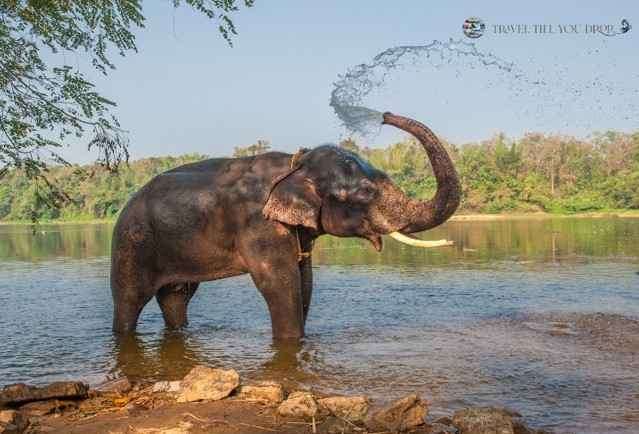
Lush greenery, exotic wildlife roaming free, and the faint sounds of distant elephants trumpeting. Welcome to Chitwan, where Mother Nature puts on a show like no other, and every moment is a chance encounter with the untamed.
Chitwan itineraries are the crown jewels of the jungle – Chitwan National Park and its legendary wildlife safaris. Put on your safari hat (or pith helmet if you’re feeling particularly adventurous) and embark on a thrilling journey through the dense foliage in search of rhinos, tigers, elephants, and maybe even a mischievous monkey or two.
Chitwan isn’t just about the wildlife – it’s also a melting pot of diverse cultures and traditions. Here, you’ll find the rich tapestry of Tharu culture with a village tour, where you’ll be welcomed with open arms and a hearty dose of hospitality, traditional dances, and home-cooked meals served with love. Overall, you will find that the Tharu people will leave an indelible mark on your heart (and possibly your taste buds).
After a day of jungle tours and cultural immersion, it’s time to kick back, relax, and unwind – and Chitwan has accommodations fit for royalty (or at least adventurous travelers like yourself). With the rustic charm of a jungle lodge nestled amidst the trees or the eco-friendly comforts of a sustainable resort committed to preserving the environment, Chitwan has something for every taste and budget.
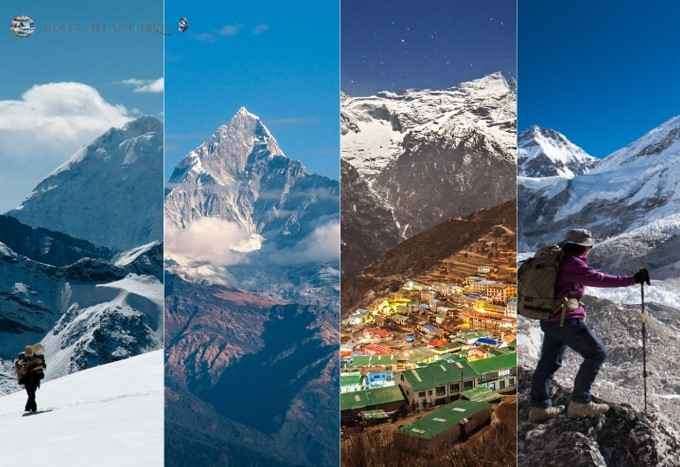
Also read our blog: Annapurna Base Camp Trek – 10 Days: Journey to The Himalayas
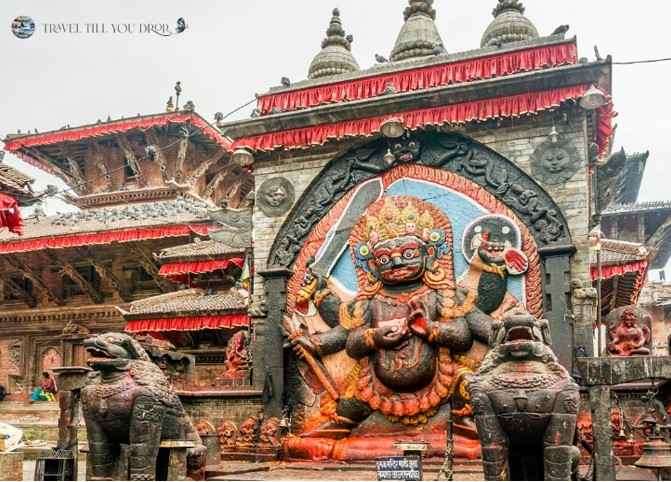

Think you have what it takes to conquer Nepal’s mountain peaks? From Everest to Mera Peak – Nepal offers mountains that will leave your calves sore and your Instagram followers green with envy! From Everest’s formidable summit to slightly less intimidating mountains such as Mera Peak or even smaller summits such as Punga, Nepal offers something for every climber – though before setting out, there are permits and timing considerations you must bear in mind: best seasons to climb are pre-monsoon (April to early June) or post-monsoon (September to November); pack your ice axe and pack courage as Nepal awaits!
Also read our blog: Ultimate Guide to Preparing for an Everest Base Camp Trek
Let’s make some noise and get wet and wild with white-water rafting in Nepal! Nepal’s rivers offer more than just fishing; they are full of turbulence. The waters here are ready to challenge you and test your gumption. Beginners might enjoy trying the Trishuli River; more experienced (and slightly crazier) paddlers should venture down Bhote Koshi River; its nonstop rapids may keep paddlers hanging on for dear life if Bhote Koshi offers nonstop rapids, while one of the top ten river journeys worldwide is Sun Koshi River which takes riders on an unforgettable ride – remember safety first by listening to your guide, wearing life jacket and not swallowing too much river water when paddling!
Finally, for those who believe that the best views are seen from the sky, we’ve got paragliding and zip-lining. In Pokhara, you can soar like an eagle (or at least a very enthusiastic pigeon) as you paraglide over the stunning Phewa Lake with the Annapurna Range as your backdrop. If hurtling through the air at breakneck speeds is more your style, the zip-line in Sarangkot is one of the longest and steepest in the world. Pro-tip: scream your lungs out – it’s all part of the experience!
If you feel you need even more activities than we’ve mentioned thus far, you can read our blog: Top 10 Thrilling Activities in Nepal: Adventure Unleashed
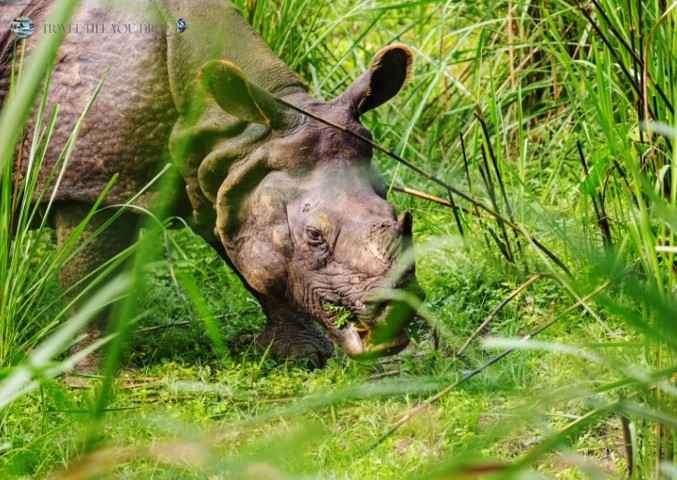
Welcome to Chitwan, the jungle where rhinos rule, and tourists drool. This is the place to be if you want to see the one-horned rhinoceros in all its majestic glory. These beasts are like the bouncers of the jungle – massive, tough, and always in control. If you’re lucky, you might catch a glimpse of a Bengal tiger, but don’t hold your breath; they’re the hide-and-seek champions of the animal kingdom.
Conservation here is taken seriously, and the park authorities have a zero-tolerance policy for poachers. This means the rhinos and tigers get to live their best lives. Hats off to the Rangers, who are basically the superheroes of Chitwan, minus the capes.
Next up is Bardia, the national park equivalent of a gritty, off-the-beaten-path adventure movie. Fewer tourists mean more raw, unfiltered nature. Picture this: you’re on a jungle safari, and a wild elephant decides to join your tour. No big deal, right?
Bardia is home to elephants, tigers, and the rare Gangetic dolphin. Yes, we said it, dolphins in a river – it’s nature’s little surprise party. The park’s conservation efforts focus on sustainable coexistence, ensuring that the local communities benefit from the presence of wildlife. It’s like a heartwarming reality show where everyone gets along – unlike your average family dinner.
Finally, we have Sagarmatha National Park, the majestic home of Mount Everest. This is where trekkers come to test their mettle, and yaks laugh at their pathetic attempts to carry heavy loads. Yaks are the unsung heroes here, effortlessly navigating the treacherous terrain while trekkers gasp for air.
In Sagarmatha, you can spot the elusive snow leopard and the dazzling Himalayan monal. Conservation efforts are crucial here to protect the delicate mountain ecosystem, which is as fragile as your ego after a yak outpaces you on a climb.
Also read: Exploring Rainbow Valley: Nature’s Deadly Canvas in the Shadow of Mount Everest
The local currency is the Nepalese Rupee (NPR), and it’s your best friend here. Forget about those dollars or euros – they’re about as useful in Nepal as a chocolate teapot. The exchange rate is pretty favorable, which means you can live like a king (or at least a very well-fed peasant) without breaking the bank.
Typical costs can vary, but here’s a rough guide: A decent meal at a local restaurant might set you back around 400-600 NPR (about $3-$5), while a cup of masala tea will cost you around 30 NPR (pocket change, really). Budget travelers can comfortably get by on $20-$30 per day, which is less than a fancy coffee and avocado toast back home.
Pro tip: Haggling is a national sport here. Embrace your inner negotiator at markets and with taxi drivers. Just remember, there’s a fine line between haggling and being a cheapskate – find that sweet spot and stick to it.
Nepal’s official language is Nepali, which is as beautifully complex as the country itself. But don’t panic – English is widely spoken in tourist areas, so you won’t need to enroll in a crash course. That said, learning a few local phrases can earn you major brownie points and maybe even a discount or two. Here are some basics:
Let’s talk about health – because nobody wants to spend their trip hugging a toilet. First off, vaccinations. Make sure you’re up to date on routine vaccines (MMR, DTP, etc.), and consider getting shots for hepatitis A, typhoid, and rabies if you’re planning to hang out with the local wildlife (pro tip: they don’t make great drinking buddies).
Travel insurance is a no-brainer. Think of it as paying a tiny bit to avoid a massive headache later. Make sure you choose the correct travel insurance policy that will include dangerous adventures rather than basic travel insurance. Whether it’s a trekking injury or a nasty case of food poisoning, you’ll be glad you have it. And speaking of food, avoid drinking tap water unless you enjoy gambling with your digestive system. Stick to bottled water and steer clear of street food unless it’s sizzling hot and cooked right in front of you.
There are a few do’s and don’ts to keep in mind:
Also read: Best 9 Hiking Treks in Nepal: Trekking the Finest Trails
Congratulations, intrepid traveler! You’re now armed with all the knowledge in this Nepal Travel Guide that you need to navigate the stunning chaos of Nepal. From haggling your way through Kathmandu’s markets to perfecting your “Namaste” amid the Himalayan peaks, you’ll be ready for anything. Remember, the local currency is your best friend, Wi-Fi is a mythical creature, and always have that travel insurance handy (because who really wants to test their luck with street food?).
So, lace up those boots, practice your Nepali phrases, and get ready to dodge holy cows and playful monkeys. Nepal is calling, and it promises an adventure as epic as the mountains themselves. So, at last, Safe travels, Namaste, and as always, Travel Till You Drop because you only live once!

Jill Charpia, founder of Travel Till You Drop and creator of inspiration. A full-time Wanderluster, lover of oddities, the weird, and the dark. Traveled to over 70+ countries and counting; Now dedicated to sharing her travels around the world in hopes of inspiring hearts and open minds. want to know more? Click here to learn more About me.


Hi, Jill Here
Hi! I’m Jill, a Dallas, Texas girl traveling the world. After a career in the Air Force and touring over 50 countries later, my need to explore keeps going! It’s time to rock & roll and find all those places I never knew I was missing.
Table of Contents
Join me to get exclusive travel tips, giveaways and more!
Gallery
Copyright © 2023 | All Right Reserved